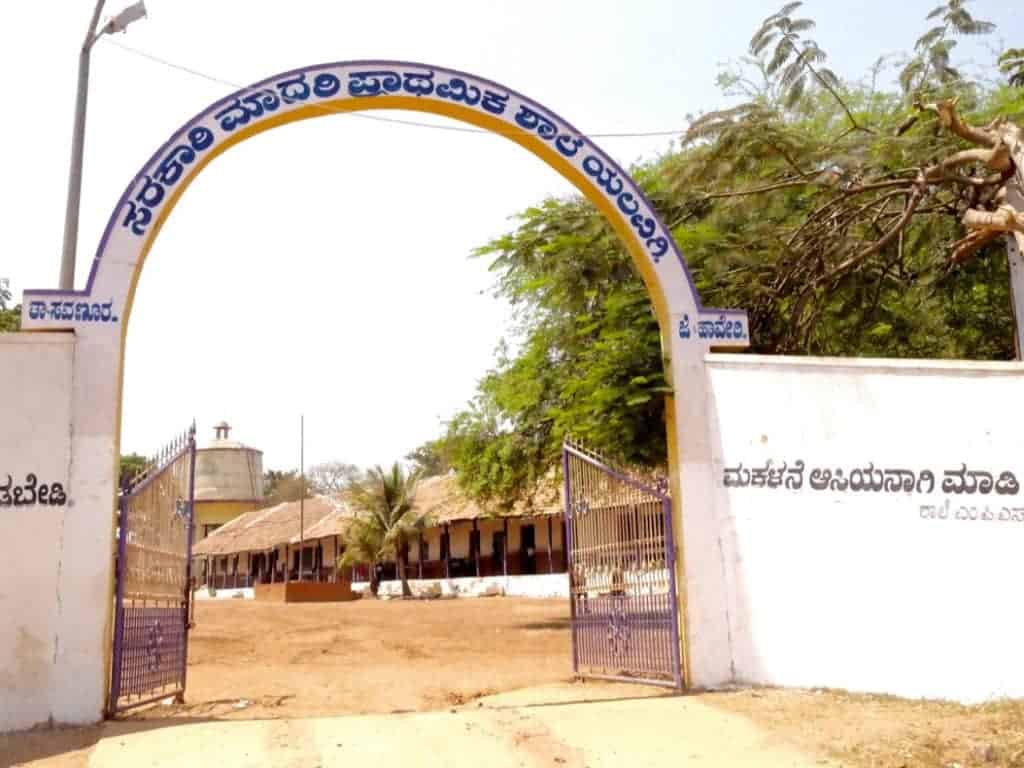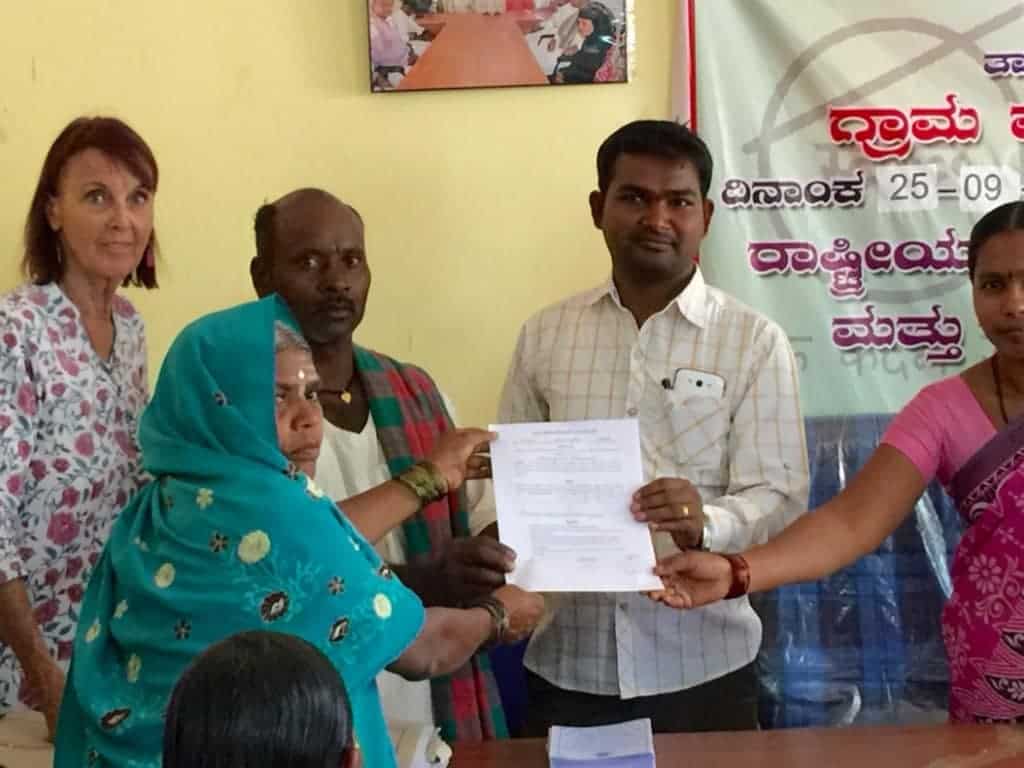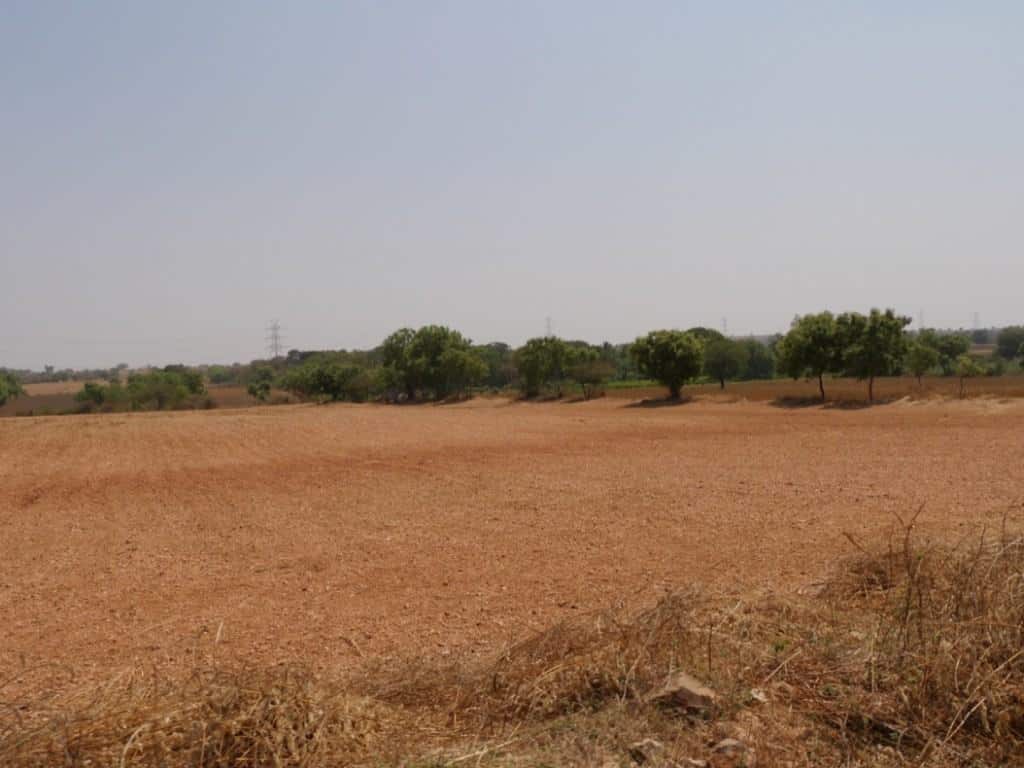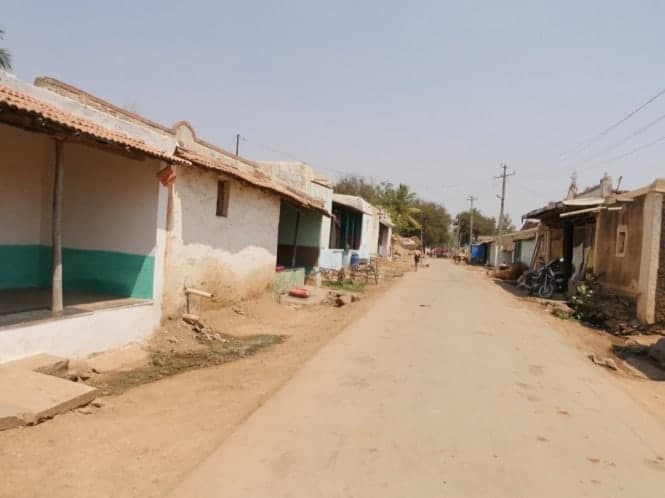The Project
District: Haveri District, Sovanur Block, Yalavigi Village
Population: 6500 with 1492 households.
 Schools in the Village: 3 primary schools and 1 highschool
Schools in the Village: 3 primary schools and 1 highschool
Water Supply: 150 bore wells many of them dried up.
Project Objective: SRDS has been invited by the Panchyat to support the Government initiative of India’s MGNREGA Scheme in the Yalavigi Village district area.
The project will implement rain water harvesting bore well recharge systems on 60 borewells in the area. The work of SRDS will be to oversee and act as consultants on the recharge technology so that the work is done in the most effective manner.
Background: Under the Government of India’s MGNREGA scheme which is a guarantee of employment in rural areas, the work of water and agricultural activities have been allocated 60% of the 38,500 crores of rupees.
The primary objective of the Act is augmenting wage employment. Its auxiliary objective is strengthening natural resource management through works that address causes of chronic poverty, like drought, and so encourage sustainable development.
Bore well recharge implementation fits very well into these criteria.
As per the above scheme – the local governing body of the village – the Panchyat – have seen the work of SRDS and having had experience of prior bore well recharge in public bore wells by the Government body and private contracters, has invited SRDS to contribute their expertise to oversee the implementation of 60 bore well recharge systems on the land holdings of individual farmers in their area.
 Agreement has been made between the Panchayat and the farmers. The financial arrangement of this work has to follow strict guidelines in accordance with the Government rulings.
Agreement has been made between the Panchayat and the farmers. The financial arrangement of this work has to follow strict guidelines in accordance with the Government rulings.
SRDS will offer their technical expertise – however as there is no provision for payment of fees for this work, (see the guideline “No contractors or machinery shall be used in the execution of work.”) in order to assist in this area SRDS must raise the funds required to cover their consultation costs.
Each recharge implementation cost is approximately total Rs 30-40,000 – Rs 7,500 is the portion related to consultancy and SRDS implementation expenses. However because these 60 borewells are centralised in one area those costs can be reduced to Rs 6000 per borewell.
Therefore for 60 bore well implementation a sum of Rs 3,60,000 needs to be raised. The Water Harvest Foundation (Australia) has donated Rs 50,000 to commence the project so our current target is Rs 3,10,000.
This project is an exciting one for SRDS as although we have to raise the funds to implement it, the amount required is less than the figure required when we implement provate borewells as approx Rs 15,000 is supplemented to the farmer in that situation. 60 bore wells in that case would require SRDS to raise Rs 9,00,000.
This Yalavigi Scheme once implemented in this dry season – will serve as a model to be replicated through out Karnataka first and then subsequently throughout India utilising the Government Project MGNREGA – and providing the technology that ensures that the work is done efficiently and with the best possible result.
The Challenges:
74% (4,800) of the residents of Yalavigi Village are living below the poverty line.
Water for agriculture is limited. Although there are 150 borewells in the surrounding farms the yield is very low and many have already dried up.
Many farmers leave their land in the dry season to seek work in the cities or other areas thereby creating instability in the family life and their community.
Landless villagers have little opportunity to find work on farms that are only growing one crop per year and have no water for irrigation.

Aims of the Project:
To implement the MGNREGA Scheme to implement rain water harvesting bore well recharge systems on 60 dried up or poorly producing bore wells on small folding farms in the area.
The purpose is to substantially increase the ground water availability and flow by implementing rain water harvesting bore well recharge on 60 bore wells in the agricultural land surrounding the village.
Expected Outcome:
- Past experience demonstrates that even the flow of dry bore wells will be restored given one or two good falls of rain.
- With an average rainy season the resulting restoration of water to the land will give the farmers who take up this technology a permanent supply of good water to irirgate their crops. The result of this will be the production of two cycles of cropping per year – as well as the planting of diverse crops such as floriculture, vegetables, fruits and other crops previously not considered due to lack of means of irrigation.
- The water table will be recharged thereby affecting not only the bore well where the recharge system has been installed but also surrounding bore wells that tap into the same aquifers.
- Farmer debt will be reduced as a result of increased income from extra cropping.
- With more income the farmers will be able to invest in other labour saving and crop intensification methods such as shed nets, solar pumps, drip irrigation systems.
- It is proven that when the income of the farmer increases, the livelihood of his family becomes sustainable and of a higher level. His children are able to attend school more regularly and to complete their studies rather than being taken out to work to support the family.
- Excessive drilling of bore wells will cease thereby reducing the strain on the water table and aquifers.
- As the farmer becomes more prosperous, other low income families and labourers are employed by the farmer so employment increases in the village as does attendance at school as those people become more settled in the village and do not need to migrate for employment elsewhere.
- The migration of the farmers to the cities in search of work will cease in with the increased supply of water.
- As the benefits of the bore well recharge systems becomes apparent the famers who have been resistant to the technology will see the benefits and the uptake of the technology will be increased after one to two years proof.
- The actual work of implementing the bore well recharge systems also creates employment in the village.
Once this project has successfully been implemented the model can be extended to other areas throughout Karnataka and India utilising the same methodology and the MRNREGA scheme.


